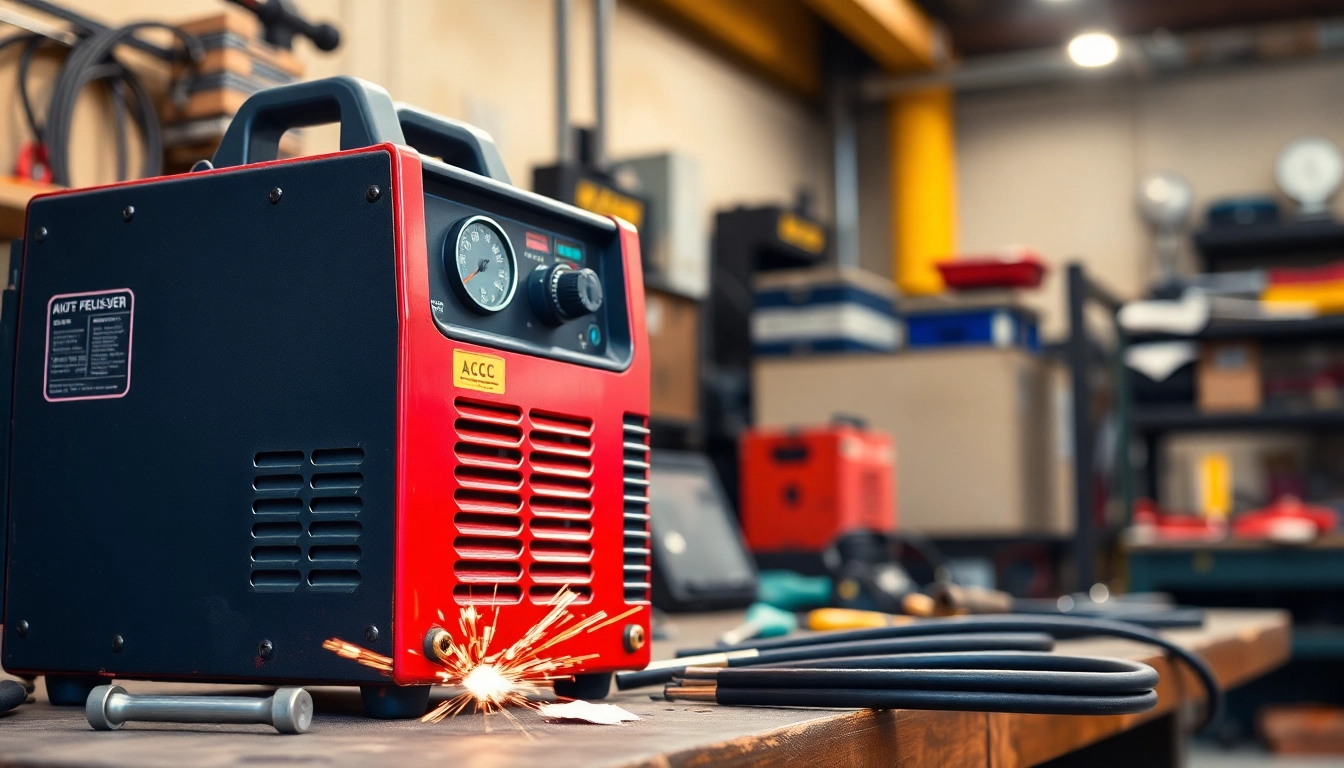Introduction to AC DC TIG Welders
Tungsten Inert Gas (TIG) welding is a niche within welding that allows for exceptional precision and control when working with metals. Among the various types of TIG welders, ac dc tig welders stand out due to their versatility. This comprehensive guide will explore what AC DC TIG welders are, their benefits, applications, and essential factors to consider when selecting one for your needs. Whether you are a hobbyist or a professional welder, understanding these machines is key to enhancing your skill set and productivity.
What is an AC DC TIG Welder?
An AC DC TIG welder is a sophisticated piece of welding equipment that operates on both alternating current (AC) and direct current (DC). The ability to switch between AC and DC gives these welders significant flexibility, allowing them to handle a broader range of materials, such as aluminum and stainless steel. AC is particularly useful for welding aluminum because it helps to break down the oxide layer, improving weld quality and penetration. Conversely, DC is predominantly used for welding metals like steel and stainless steel due to its stable arc characteristics and deeper penetration.
Advantages of Using an AC DC TIG Welder
The advantages of using an AC DC TIG welder are numerous:
- Versatility: As previously mentioned, these welders can handle different metals, expanding their usability across various projects.
- Precision: TIG welding allows for exceptional control over the heat input, which is crucial when working with thin materials.
- Clean Welding: Since TIG welding has minimal spatter, it results in cleaner welds that often require less post-weld cleanup.
- Wide Compatibility: With the ability to use both AC and DC, welders can tackle a variety of tasks, accommodating different welding electrodes and filler materials.
Common Applications of AC DC TIG Welding
AC DC TIG welders are used in various industries and applications:
- Aerospace: In high-stakes environments that require impeccable strength and precision, such as aircraft manufacturing.
- Automotive: For welding aluminum body components, as well as exhaust systems made from stainless steel.
- Art and Fabrication: Artists and fabricators utilize TIG welding for sculpting metals due to the aesthetic quality of the welds.
- Pipe Welding: In plumbing and piping for processes requiring tight, strong welds that can withstand pressure.
Factors to Consider When Buying an AC DC TIG Welder
Welding Material Compatibility
When purchasing an AC DC TIG welder, one of the primary factors is material compatibility. Understanding the types of metals you plan to work with will help you select a machine that can accommodate those needs. Generally, aluminum demands an AC machine, while most ferrous and some non-ferrous metals are best suited for DC operations. Always check the specifications of the welder to confirm its capabilities.
Power Requirements and Input Voltage
Power requirements are indispensable in selecting the right welder. Most welders are available in either 120V or 240V input configurations. For heavier gauge materials, more power is often necessary. As such, it’s important to assess both the primary welding conditions and the availability of power supply in your workspace. A 240V machine will typically handle larger tasks, but if portability is a concern, a 120V option may suffice for lighter work.
Duty Cycle and Performance Ratings
The duty cycle of a TIG welder indicates how long it can operate a certain amp rating during a given period without overheating. Expressed as a percentage, a 60% duty cycle at 150 amps means the welder can operate for 6 minutes of every 10 minute period at that amp setting before needing to cool down. When selecting a welder, consider your typical project requirements and choose a machine that can handle the expected workload.
Top Features to Look for in an AC DC TIG Welder
Portability and Design
When selecting an AC DC TIG welder, consider the unit’s portability. For on-site work or projects involving multi-location setups, a lighter, compact design is advantageous. Look for welders that feature durable handles and wheels, facilitating easy transport between job sites.
User-Friendly Controls and Settings
Modern TIG welders come equipped with various controls, including settings for amperage, voltage, and gas flow. Look for machines that offer intuitive displays and easy-to-navigate interfaces. Yet, even with advanced digital displays, ensure they provide manual settings for operators who prefer hands-on control.
Safety Features and Certifications
Welding can be hazardous, so safety features are paramount. Look for welders that incorporate features such as thermal overload protection, and those recognized or certified by safety standards organizations. Features like automatic shut-off in the event of overheating can also mitigate risks.
Best AC DC TIG Welders on the Market
Overview of Leading Brands
Several brands are recognized as leaders in manufacturing AC DC TIG welders, including:
- Miller Electric: Known for producing high-quality, reliable welding equipment.
- Lincoln Electric: Offers a range of machines from entry-level to advanced, appealing to all types of welders.
- Everlast: Provides affordable yet capable options, ideal for both hobbyists and serious welders.
- PrimeWeld: Focuses on delivering high-performance features at accessible prices.
Comparison of Models and Features
| Brand | Model | Input Voltage | Amperage Range | Duty Cycle |
|---|---|---|---|---|
| Miller Electric | Dynasty 210 | 120/230V | 5-210A | 60% at 150A |
| Lincoln Electric | Square Wave TIG 200 | 120/240V | 10-200A | 50% at 150A |
| Everlast | PowerTIG 200DV | 110/220V | 10-200A | 60% at 150A |
| PrimeWeld | TIG 225X | 110/220V | 10-225A | 60% at 200A |
Pricing and Value for Money
Pricing for AC DC TIG welders varies widely based on power, brand, and features. Budget models may start around $400, while high-end units can exceed $3,000. It’s crucial to evaluate what features suit your specific needs and balance that against your budget. Often, investing a little more upfront can yield longer-term savings through enhanced functionality and lower maintenance costs.
Maintaining Your AC DC TIG Welder
Regular Maintenance Tips for Longevity
Maintaining your AC DC TIG welder is vital for ensuring optimal performance and longevity. Here are some key tips:
- Clean regularly: Keep the welder’s exterior and interior free from dust and debris.
- Inspect cables and hoses: Ensure that there are no signs of wear or damage.
- Replace consumables: Regularly change out tungsten electrodes and ceramic cups to ensure clean welds.
- Check gas flow: Ensure your gas supply is adequate and clean to prevent contamination.
Common Issues and Troubleshooting
Understanding common issues can save time and frustration. Here are a few frequent problems:
- Inconsistent arc: This can be due to incorrect settings or worn-out tungsten. Check both to ensure consistent performance.
- Poor penetration: Typically a result of low settings. Increase amp settings to improve penetration.
- Excessive spatter: Often a result of improper gas flow or too high amperage. Adjust accordingly.
When to Seek Professional Inspections
It’s recommended to seek professional inspections if you notice issues that you can’t resolve through standard troubleshooting techniques or if the welder shows signs of severe wear. Annual professional checks can also help identify potential problems before they become significant faults.


